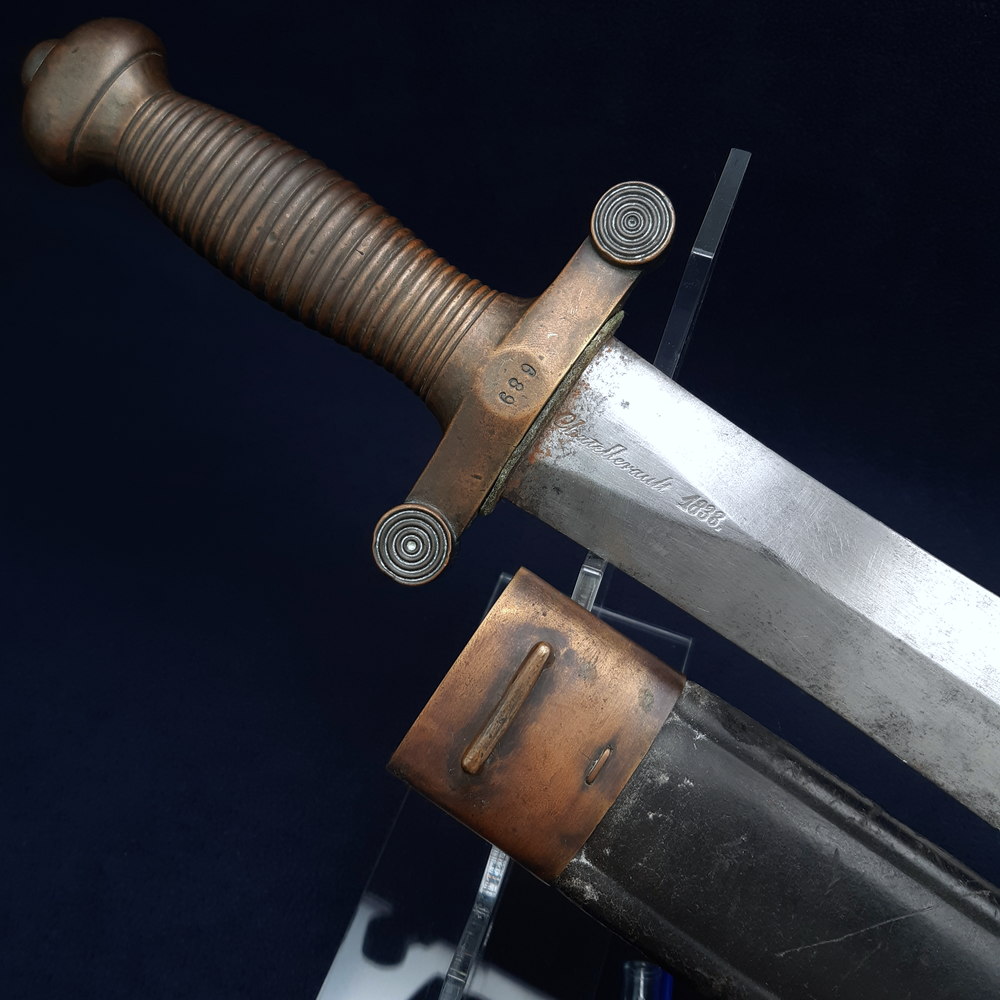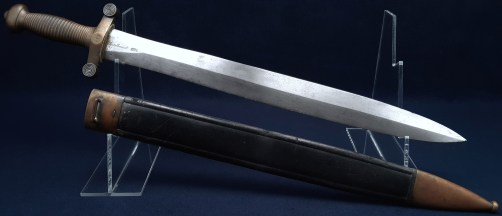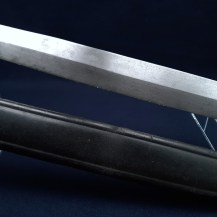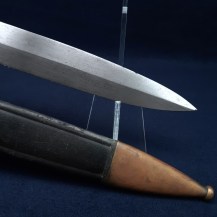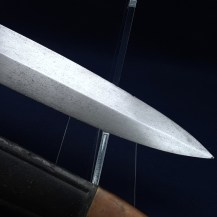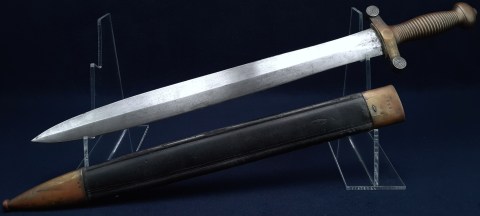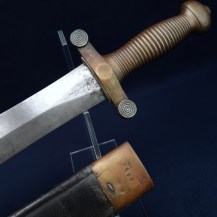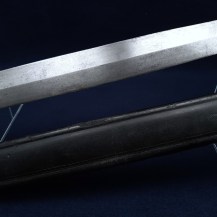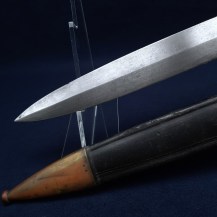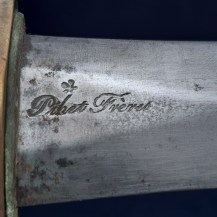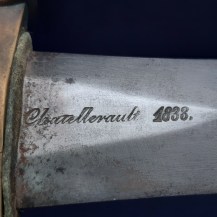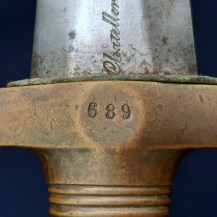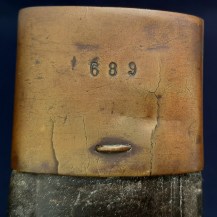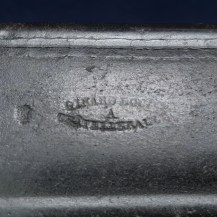French Model 1831 Artillery Sidearm, Dated 1833 by Pihet Freres, Chatellerault
Straight double-edged blade, unfullered with diamond profile and spear point. One-piece cast brass hilt, grip and pommel, the hilt with circular finials, the grip ribbed, the pommel oval with a domed circular tang button. Brown leather washer. Black leather scabbard with brass throat and chape pieces, the throat piece with a frog loop, the leather section with two debossed lines lengthwise on the front face, similar on the reverse face but with one line being the stitching. Blade 48.7cm in length (just over 19 1/8 inches), the sword 63.7cm (just over 25 inches) overall.
The blade is stamped on one side at the forte with ‘Pihet Frères’ and a five-lobed flowerhead stamp, and on the other side with ‘Chatellerault 1833.’ The hilt is stamped on one side with the serial number ‘689’. The throat piece of the scabbard is stamped on the reverse side with a matching serial number ‘689’ indicating that blade and scabbard are an original pair. The leather of the scabbard is stamped with the maker’s mark ‘GIRARD LOUIS A CHÂTELLERAULT’.
Created in 1816, the Manufacture de Chatellerault, near Poitier, was a key arms factory for the French state. In the 1830s it took over from the Maubeuge, Charleville and Klingenthal plants, all of these being considered too close to the German border to be relied upon during a war.
Pihet Frères (Pihet Brothers) were a private concern operating as contractors with Chatellerault. The blades would be made in the government plant and Pihet would cast the hilts and assemble the finished swords. Girard Louis would have been another contractor producing scabbards, or possibly just their leather bodies.
During the late 19th and early 20th centuries production of swords at Chatellerault decreased while firearms manufacture surged. Despite increasing use of machine tools and the nearing obsolescence of the sword, its blades were all hand-forged until 1916. Swordmaking there ceased in 1937.
Sidearms with the form of a neoclassical ‘gladius’ appear to have originated with the French 1771 ‘Eagle Head’ Artillery sword. A series of very similar-looking short swords were subsequently designed, including the French 1816 & 1831 Artillery models, the US Model 1832 Foot Artillery, the Swiss 1842 Pioneer’s, the Russian 1848 Pioneer’s and the British 1855 Land Transport. They were simple and robust but not particularly useful for combat (the gladius having become obsolete for good reasons) so remained either ceremonial items or in the role of a machete for various field tasks such as clearing brush.
Many examples of this type have been repolished, sometimes many times over to keep the brass bright, which results in surface wear and obscures markings. This example is one of two held in the same family by descent from a French ancestor since at least the late 19th century (the other also for sale), and has been stored well but otherwise left alone, lending the brass an evenly aged patina.
[Click here for the other example of the pair]
One edge of the blade has been sharpened with visible sharpening marks. A number of small nicks to the sharpened edge, two small nicks near the tip on the unsharpened edge. The blade has light speckled patination, some spots of heavier patination at the shoulder next to the washer. The washer is a rare survivor with only slight wear and some verdigris staining. The scabbard leather is very good although with denting and abrasion at its edges, all of its stitching is intact. The brass throat piece has some cracks running from its edge on one side, not threatening its integrity.

